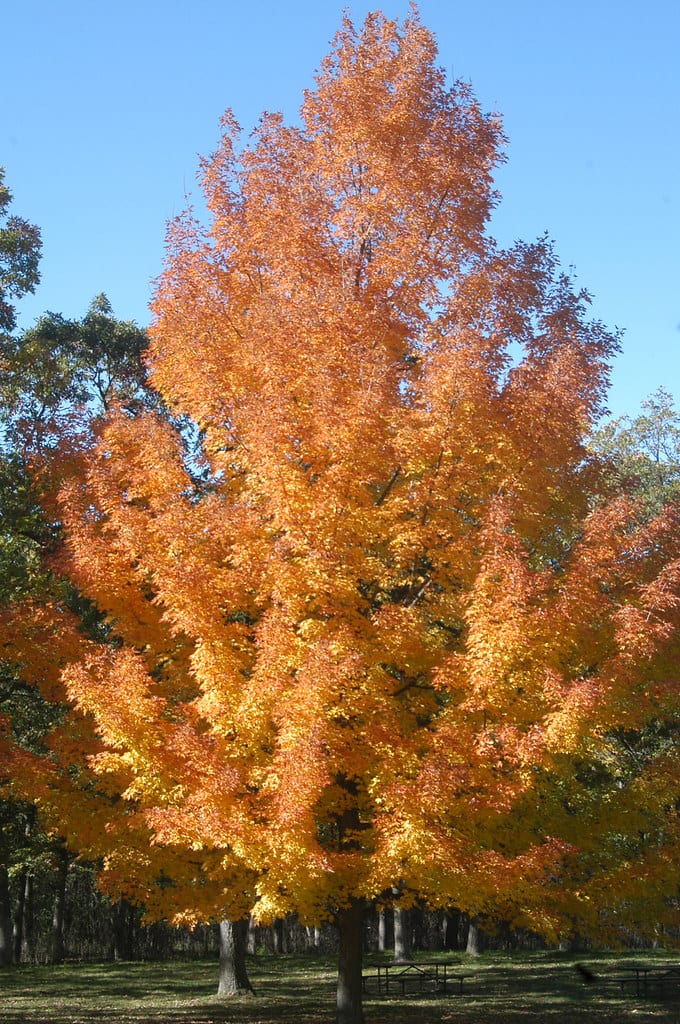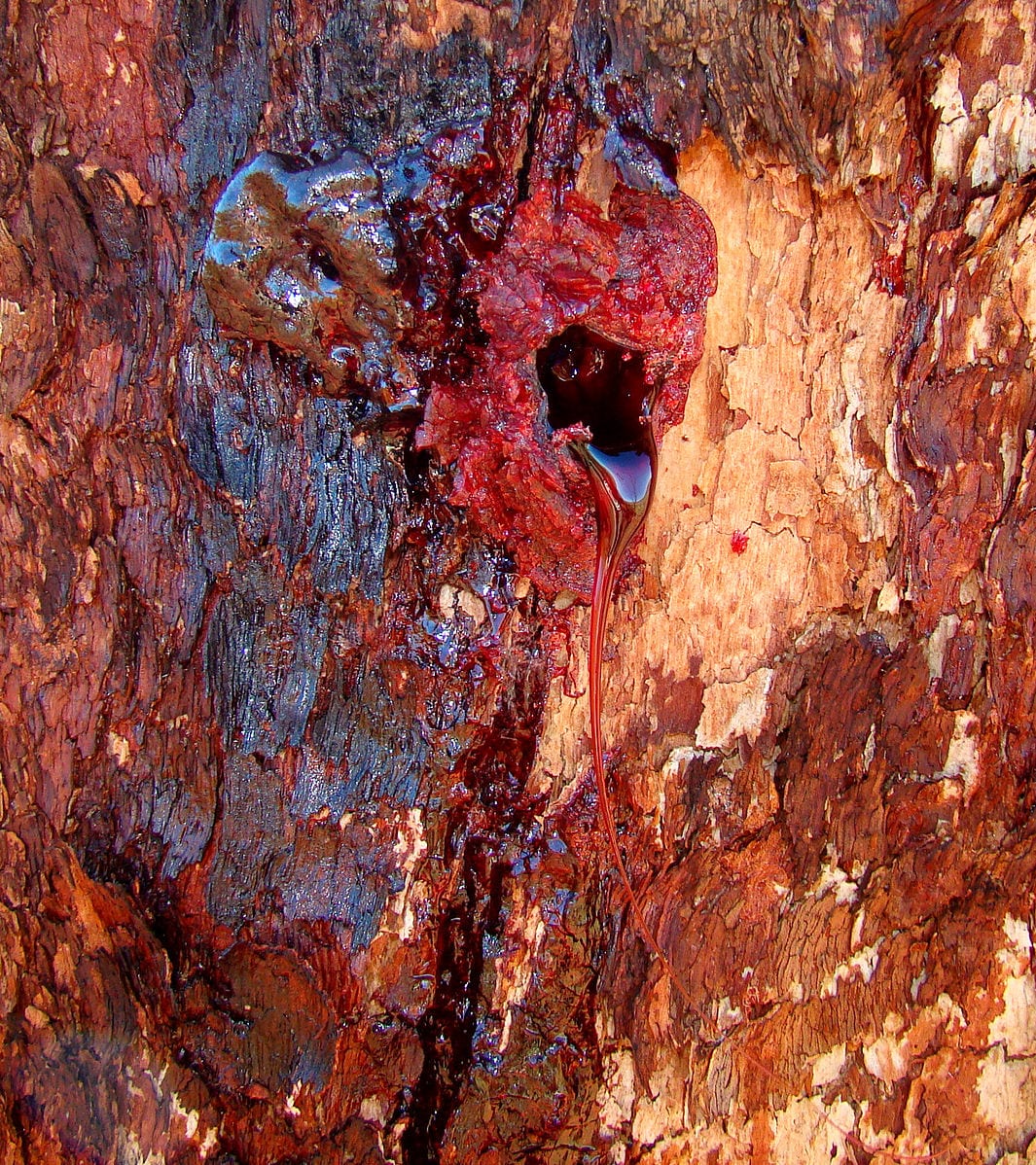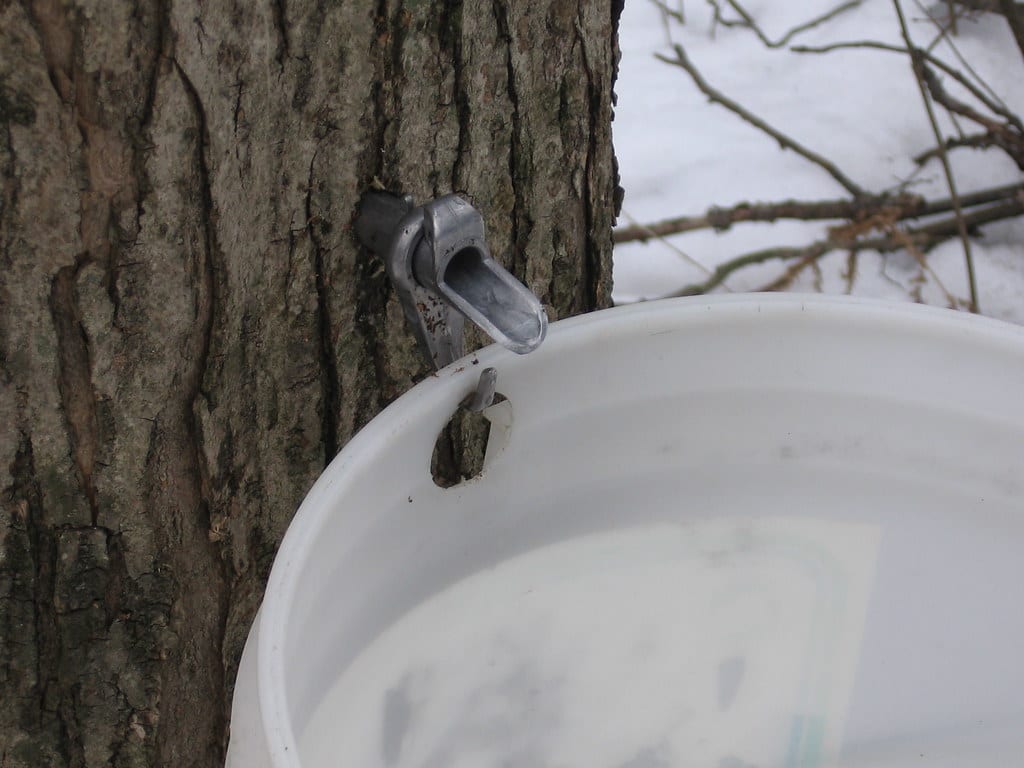Maple syrup is a staple in Western breakfast culture. True maple syrup – as opposed to the thick corn syrup imitation that sits in many American diners – comes from a variety of trees, mostly the sugar maple. But this breakfast condiment is more than just goo that happens to ooze out of a plant that also happens to be delicious: it serves an important role in the processes of plant functioning and growth.

Why do trees make it?
Vascular plants, including trees, rely on xylem for water and nutrient transport. These xylem cells aid the tree in the task of moving gallons of water from roots to the leaves in a single day. Along for the watery ride are dissolved phytohormones and mineral nutrients – the mixture of these components creates sap. Sap can often be spotted leaking out of trees, typically due to damage or infection. It's present throughout all the tissues of a tree and is transported wherever it's needed the most; in this sense, sap can be thought of as the tree's ‘blood'. In fact, some trees have a dramatically deep red sap, creating the appearance of a gruesome, bloody wound when damaged.

The makeup of sap varies across different types of trees and is influenced by the tree's environment and evolutionary history. For example, that bloody tree, has sap full of tannins, the same compound that makes wine red. Tannins are notoriously bitter and would probably make an awful breakfast condiment – they actually have evolved as a toxic deterrent for many herbivores. Other trees that live in cold climates have evolved to have sap rich with chemicals that prevent it from freezing and thawing too quickly, which can help prevent embolism. Maple trees tend to have sap chock full of sugar. Where would sugar even come from, you ask? Glucose, a sugar, is actually one of the main products of photosynthesis. The plant then modifies the sugar to turn it into sucrose, which is when it joins the watery pathway we know as sap. Sucrose is a source of energy for the plant, fueling the development of rapidly growing tissues and other processes such as the making of fruit and new leaves. Luckily for us, sucrose is the form of sugar that we use to sweeten our foods.
How do we turn sap into maple syrup?
During the winter, trees essentially hibernate and stock up on starch, a form of sugar that plants use as a way to store energy. Without leaves, the trees aren't able to make food from sunlight, so they use these starch reserves to persevere through the season. In the spring, the increase in temperature causes the tree to break dormancy, converting starch into simpler sugars, like glucose, which subsequently gives the tree energy to flush out a brand new set of leaves. It's around this time,“Sugaring Seasonâ€, that the maple syrup farmers go out and tap the trees by drilling a small hole and inserting a spigot, which essentially acts as a funnel from the sap to a tank. Trees can give the maple syrup farmers up to 10 gallons of sap from a single tap. But even though the sap from maples is sugary relative to other trees, the watery substance is only about 2% sugar. To make the plant product into the viscous and saccharine syrup we love, the water is boiled out of it at high temperatures. It takes about 40 gallons of freshly tapped sap to make about a single gallon of pure maple syrup.

Many of us don't realize the ubiquity of products we use that are derived from the plant world – we rely heavily on plants and their byproducts for our daily routines. From the pinewood that provides a framework for our houses, the cotton in our shirts, the aspirin we take for an ache, and of course the sweeteners we use in our foods – we owe plants a great deal. So next time you douse your waffles with some of that maple syrup, remember how much we rely on nature and plant biodiversity for the things we may take for granted (or just tell your friends that you're eating tree blood).
About the Author
Simone Lim-Hing is a postdoctoral researcher at the University of Georgia Warnell School of Forestry and Natural Resources studying the host response of loblolly pine against pathogenic fungi. Her main interests are chemical ecology, ecophysiology, and evolution. Outside of the lab and the greenhouse, Simone enjoys going to local shows around Athens, playing Mario Kart, and reading at home with her cat, Jennie. You can reach Simone at simone.zlim@uga.edu or on twitter @simonelimhing. More from Simone Lim-Hing.
- Simone Lim-Hinghttps://athensscienceobserver.com/author/simone-lim-hing/March 11, 2024
- Simone Lim-Hinghttps://athensscienceobserver.com/author/simone-lim-hing/March 18, 2021
- Simone Lim-Hinghttps://athensscienceobserver.com/author/simone-lim-hing/April 1, 2020
- Simone Lim-Hinghttps://athensscienceobserver.com/author/simone-lim-hing/








